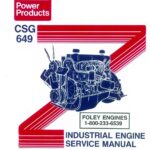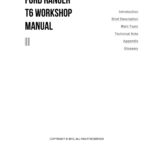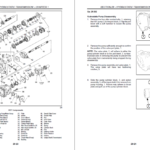Revive The Power: Complete Rebuild Of A 1950 Ford F1 3-Speed Manual Transmission – Click To Action Now!
1950 Ford F1 3-Speed Manual Transmission Rebuild: A Comprehensive Guide
The 1950 Ford F1 is a classic truck that holds a special place in the hearts of automotive enthusiasts. Its timeless design and robust build make it an icon of the era. However, as with any vehicle of its age, certain components may require maintenance or even a complete rebuild. One critical aspect that often needs attention is the 3-speed manual transmission. In this article, we will delve into the world of the 1950 Ford F1 3-speed manual transmission rebuild, exploring its various aspects, procedures, and tips to ensure a successful restoration.
Introduction
The purpose of this manual is to serve as a comprehensive guide for individuals looking to rebuild the 3-speed manual transmission of the 1950 Ford F1. By following the instructions and recommendations provided, enthusiasts can restore the transmission to its original condition and ensure optimal performance. The manual is structured in a logical and organized manner, starting with an overview of the transmission, its key features, and the importance of proper maintenance. It then progresses to more detailed topics such as fluid capacities, troubleshooting guides, and updates and revisions.
2 Picture Gallery: Revive The Power: Complete Rebuild Of A 1950 Ford F1 3-Speed Manual Transmission – Click To Action Now!
Body Paragraphs
What is a 1950 Ford F1 3-Speed Manual Transmission Rebuild?
A 1950 Ford F1 3-speed manual transmission rebuild refers to the process of disassembling, inspecting, cleaning, repairing, and reassembling the transmission to restore it to its original working condition. This procedure is necessary when the transmission shows signs of wear, such as slipping gears, grinding noises, or difficulty shifting. By rebuilding the transmission, enthusiasts can maintain the truck’s authenticity while ensuring smooth gear changes and optimal performance.
Who Should Perform a 1950 Ford F1 3-Speed Manual Transmission Rebuild?
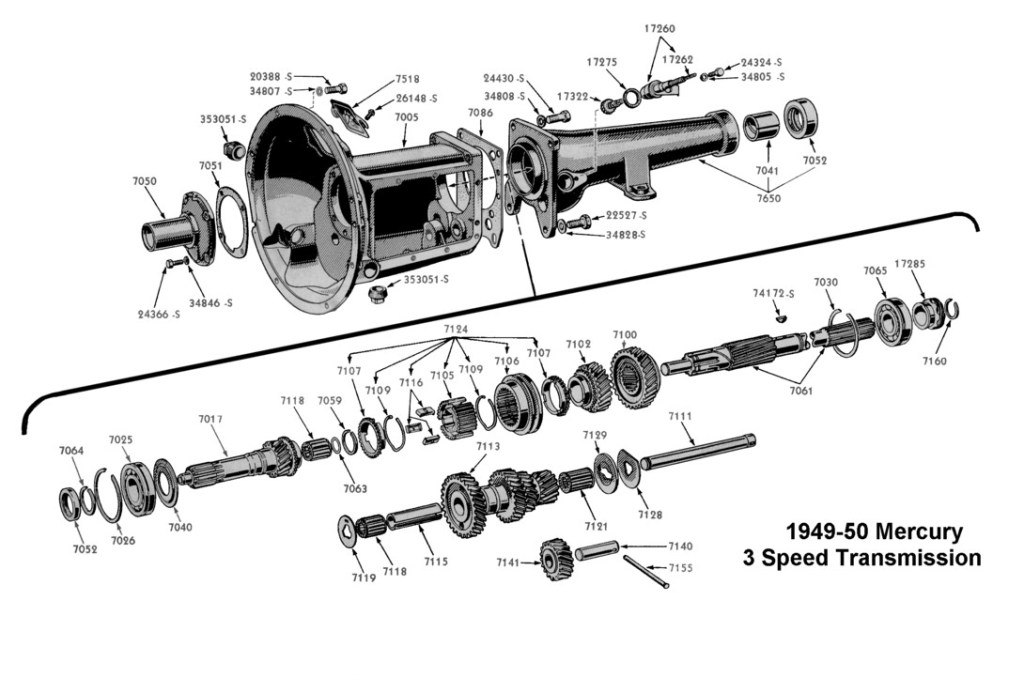
Image Source: vanpeltsales.com
A 1950 Ford F1 3-speed manual transmission rebuild requires a certain level of mechanical knowledge and expertise. While it is possible for individuals with intermediate DIY skills to tackle this project, it is recommended to seek the assistance of a professional mechanic or transmission specialist. Their experience and access to specialized tools will ensure a thorough and accurate rebuild, minimizing the risk of mistakes or further damage.
When and Where Should a 1950 Ford F1 3-Speed Manual Transmission Rebuild Be Done?
The need for a 1950 Ford F1 3-speed manual transmission rebuild can arise at any time, depending on the condition of the transmission and its maintenance history. Ideally, it should be performed when the transmission shows signs of wear or malfunctions that cannot be resolved through simpler repairs. As for the location, a well-equipped garage or workshop with sufficient space and proper tools is essential for a successful rebuild.
Why is a 1950 Ford F1 3-Speed Manual Transmission Rebuild Important?
A 1950 Ford F1 3-speed manual transmission rebuild is essential to ensure the longevity and performance of the transmission. Over time, internal components may wear out, leading to shifting problems, gear slippage, or even complete failure. By rebuilding the transmission, enthusiasts can address these issues and restore the truck’s drivability. Additionally, a properly rebuilt transmission increases the vehicle’s value and enhances the overall ownership experience.
How to Perform a 1950 Ford F1 3-Speed Manual Transmission Rebuild?
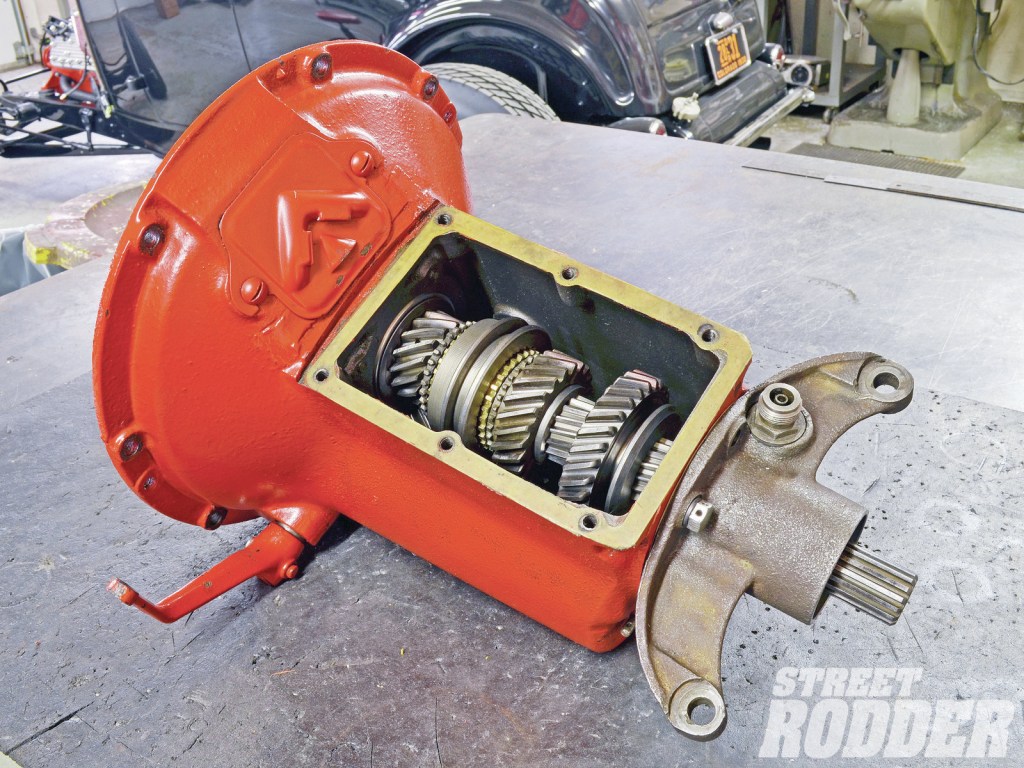
Image Source: motortrend.com
Performing a 1950 Ford F1 3-speed manual transmission rebuild requires careful planning, knowledge of the transmission’s inner workings, and the right tools. The process generally involves the following steps:
Disassembly: Start by removing the transmission from the vehicle and systematically disassembling it, documenting each step to aid reassembly.
Inspection: Thoroughly inspect all components for wear, damage, or signs of impending failure. Replace any parts that do not meet the manufacturer’s specifications.
Cleaning: Clean all parts using appropriate solvents and techniques to remove dirt, debris, and contaminants. This step is crucial to ensure smooth operation and prevent future issues.
Repair and Replacement: Repair or replace any damaged or worn components discovered during the inspection. This may include gears, bearings, synchronizers, and seals.
Reassembly: Reassemble the transmission using the correct torque specifications and following the manufacturer’s guidelines. Pay close attention to proper alignment and lubrication.
Testing: Before reinstalling the transmission in the vehicle, perform thorough testing to ensure proper function and identify any remaining issues that need addressing.
Reinstallation: Once the transmission passes the testing phase, reinstall it in the vehicle, ensuring all connections are secure and in their correct positions.
Fluid Replacement: After the rebuild, it is crucial to replace the transmission fluid with the correct type and quantity as specified by the manufacturer.
FAQs about 1950 Ford F1 3-Speed Manual Transmission Rebuild
Q: How long does a transmission rebuild take?
A: The duration of a 1950 Ford F1 3-speed manual transmission rebuild can vary depending on several factors, including the condition of the transmission, the skill level of the person performing the rebuild, and the availability of parts. On average, a comprehensive rebuild can take anywhere from a few days to a couple of weeks.
Q: Can I reuse my old transmission fluid after a rebuild?
A: It is generally not recommended to reuse old transmission fluid after a rebuild. The fluid may contain contaminants and debris that could negatively impact the transmission’s performance. It is best to replace the fluid with a fresh supply to ensure optimal lubrication and cooling.
Q: Do I need any specialized tools for a transmission rebuild?
A: Yes, a 1950 Ford F1 3-speed manual transmission rebuild requires several specialized tools to disassemble, inspect, and reassemble the transmission. These may include gear pullers, bearing drivers, snap ring pliers, and a torque wrench, among others. It is crucial to have the right tools on hand to avoid damaging the transmission or its components.
Transition Paragraphs
Now that we have covered the basic information about the 1950 Ford F1 3-speed manual transmission rebuild, let’s explore some of the key features and functionalities that make this transmission unique and sought after among automotive enthusiasts.
Key Features of the 1950 Ford F1 3-Speed Manual Transmission
The 1950 Ford F1 3-speed manual transmission is known for its durability, simplicity, and smooth shifting. Some of its key features include:
Cast iron construction: The transmission housing is made of cast iron, providing strength and durability.
Three-speed design: The transmission offers three forward gears, allowing for a versatile driving experience.
Column shift: The shifter is located on the steering column, providing easy and convenient gear changes.
Synchronized gears: The second and third gears are synchronized, enabling smooth and seamless shifting.
Sliding mesh design: The transmission utilizes a sliding mesh gear design, which is simple and reliable.
Controls and Functionalities
The 1950 Ford F1 3-speed manual transmission features a straightforward control layout, making it user-friendly and intuitive. The controls and functionalities include:
Clutch pedal: Depressing the clutch pedal disengages the engine from the transmission, allowing for smooth gear changes.
Shifter: The shifter is located on the steering column and consists of a lever that can be moved to select the desired gear.
Shift pattern: The shift pattern for the 1950 Ford F1 3-speed manual transmission is typically a H pattern, with the gears arranged in a horizontal line.
Neutral position: The neutral position is located between the gears, allowing the transmission to spin freely without transmitting power to the wheels.
Fluid Capacities
Understanding the fluid capacities of the 1950 Ford F1 3-speed manual transmission is essential for proper maintenance and operation. The transmission requires a certain amount of lubricating fluid to ensure smooth gear changes and reduce friction and wear. The fluid capacities typically include:
Transmission oil capacity: The 1950 Ford F1 3-speed manual transmission typically requires around 3 to 4 pints (1.4 to 1.9 liters) of transmission oil.
Various Models and Technologies
While the 1950 Ford F1 3-speed manual transmission is a classic design, there were variations and updates throughout its production. Some of the different models and technologies used in the transmission include:
Early models: The early 1950 Ford F1 transmissions featured a simpler design with non-synchronized first gears, requiring double-clutching for smooth gear changes.
Later models: As production progressed, Ford introduced synchronized first gears, allowing for easier and smoother shifting without double-clutching.
Technological advancements: Over the years, advancements in materials and manufacturing processes contributed to improved durability and performance.
This post topic: Manual
